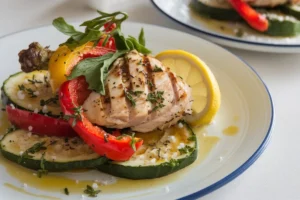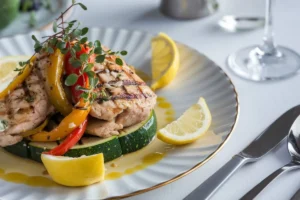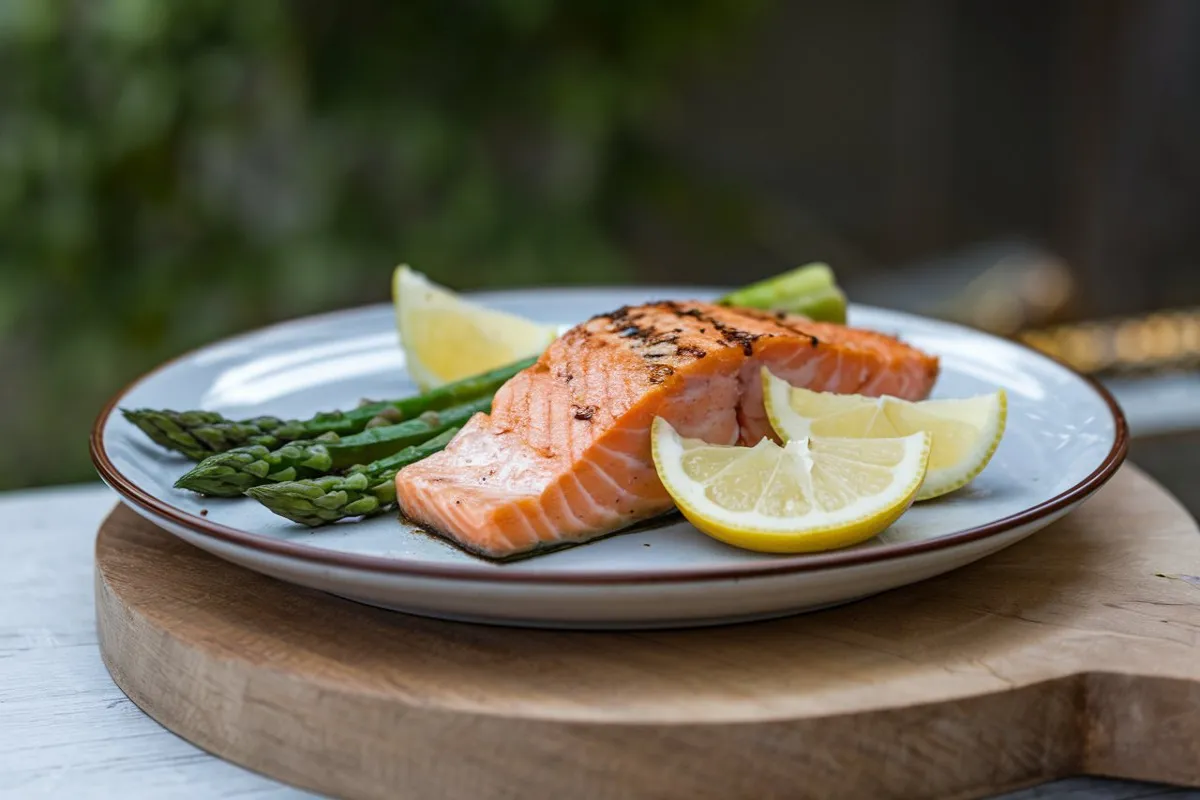What Takeaway Can I Eat with GERD? A Comprehensive Guide
Living with GERD (Gastroesophageal Reflux Disease) can be challenging, especially when it comes to enjoying a meal out or ordering takeaway. GERD is a chronic condition where stomach acid frequently flows back into the esophagus, causing discomfort, heartburn, and other symptoms. Managing GERD effectively often requires significant dietary adjustments, but this doesn’t mean you have to give up on the convenience of takeaway meals altogether. With a little knowledge and careful selection, you can still enjoy delicious takeaway options without triggering your GERD symptoms.
In this blog post, we will delve deep into understanding GERD, explore the best takeaway options for those with GERD, and offer practical tips for ordering food that is both satisfying and safe for your condition.
Understanding GERD: What Is It and Why Does Diet Matter?
Gastroesophageal Reflux Disease (GERD) is a condition characterized by the backward flow of stomach acid into the esophagus. This can lead to symptoms such as heartburn, chest pain, regurgitation, and even difficulty swallowing. The severity of GERD can vary from person to person, with some experiencing mild symptoms occasionally, while others may have severe and chronic symptoms that require medical intervention.
The Role of Diet in Managing GERD

Diet plays a crucial role in managing GERD symptoms. Certain foods and drinks can trigger acid reflux, while others can help soothe the digestive system and prevent flare-ups. Understanding which foods to avoid and which ones are safe is key to managing GERD effectively.
Common Trigger Foods for GERD:
- Spicy Foods: These can irritate the esophagus and trigger heartburn.
- Fatty and Fried Foods: High-fat foods relax the lower esophageal sphincter (LES), making it easier for stomach acid to flow back into the esophagus.
- Citrus Fruits and Juices: The acidity in citrus can aggravate GERD symptoms.
- Tomato-based Products: Tomatoes are highly acidic and can trigger reflux.
- Chocolate: Contains caffeine and theobromine, which can relax the LES.
- Caffeine: Found in coffee, tea, and some sodas, caffeine can exacerbate GERD symptoms.
- Carbonated Beverages: These can increase stomach pressure and lead to reflux.
- Alcohol: Relaxes the LES and increases stomach acid production.
Foods That May Help with GERD:
- Non-citrus fruits: Bananas, melons, apples, and pears are less likely to trigger reflux.
- Vegetables: Especially non-acidic ones like green beans, broccoli, and asparagus.
- Lean proteins: Chicken, turkey, and fish are generally safe if they are grilled, broiled, or baked.
- Whole grains: Oatmeal, brown rice, and whole-grain bread are soothing for the digestive system.
- Ginger: A natural remedy for nausea, ginger can also help with digestion.
- Healthy fats: Avocados, nuts, and seeds can be eaten in moderation.
Understanding these dietary principles is the foundation for making smart choices when ordering takeaway.
Best Takeaway Options for People with GERD
When it comes to takeaway, the key is to choose foods that are low in fat, not too spicy, and free from common GERD triggers like garlic, onions, and tomatoes. Here are some popular takeaway cuisines and specific dishes that are generally safe for those with GERD.
1. Asian Cuisine
- Sushi: Opt for rolls with cooked fish or vegetables, avoiding spicy sauces and tempura. Steamed dumplings can also be a good option.
- Rice and Noodle Dishes: Stick to dishes like plain rice or noodles with steamed vegetables and lean proteins like chicken or tofu. Avoid dishes with heavy, oily sauces or those that are deep-fried.
- Soups: Miso soup and clear broth soups without spicy elements can be soothing.
2. Mediterranean Cuisine
- Grilled Chicken or Fish: Choose grilled over fried, and avoid heavy, creamy sauces. Accompany with steamed or grilled vegetables.
- Salads: Opt for salads with a light dressing (olive oil and vinegar or a yogurt-based dressing) and without acidic ingredients like tomatoes or citrus. Feta cheese in moderation is usually fine.
- Pita and Hummus: Whole-grain pita with hummus is a good option, but avoid adding spicy elements like garlic or chili flakes.
3. Italian Cuisine
- Grilled Chicken or Fish: Again, grilled is better than fried. Pair with a side of steamed or sautéed vegetables.
- Pasta: Choose a pasta dish with a mild sauce, such as a basil pesto or a light olive oil and garlic sauce. Avoid marinara or Alfredo sauces, as these can be too acidic or rich.
- Pizza: If you crave pizza, opt for a white pizza (without tomato sauce) topped with vegetables and a small amount of cheese.
4. Mexican Cuisine
- Grilled Tacos: Choose grilled chicken or fish tacos without spicy salsa, and avoid fried taco shells. A small amount of guacamole is fine, but avoid adding onions or spicy peppers.
- Burrito Bowl: Skip the tortilla and opt for a bowl with rice, beans, grilled chicken or fish, and non-spicy salsa. Top with a small amount of cheese or avocado.
- Fajitas: Grilled chicken or steak fajitas with bell peppers and onions (without the tortilla) can be a good option, as long as you skip the spicy sauces.
5. American Cuisine
- Grilled Chicken Sandwich: Ask for the sandwich without mayonnaise or heavy sauces, and opt for whole-grain bread. A side of steamed vegetables or a plain baked potato can complete the meal.
- Turkey Burger: A turkey burger is generally lower in fat than a beef burger. Ask for it without cheese or heavy toppings, and choose a whole-grain bun.
- Salads: Go for salads with lean proteins, like grilled chicken or shrimp, and ask for dressing on the side. Avoid salads with tomatoes, onions, or heavy dressings.
6. Middle Eastern Cuisine
- Grilled Meats: Kebabs made with chicken or lamb can be a good choice, especially when paired with grilled vegetables and rice. Avoid spicy sauces or pickled vegetables.
- Falafel: If baked rather than fried, falafel can be a healthy option. Pair with a side of hummus and a small portion of tabbouleh (without tomatoes).
7. Indian Cuisine
- Tandoori Dishes: Tandoori chicken or fish, which are marinated in yogurt and spices and then grilled, are usually safe choices. Avoid curries with heavy cream or tomatoes.
- Rice and Lentil Dishes: Plain basmati rice with lentils (dal) can be a gentle option. Choose dishes that are not heavily spiced or fried.
- Naan: Plain naan bread is usually safe, but avoid garlic naan or other flavored varieties.
Tips for Ordering GERD-Friendly Takeaway

When ordering takeaway, it’s important to communicate your dietary needs clearly. Here are some practical tips to ensure your meal is both satisfying and GERD-friendly:
1. Ask for Modifications
Don’t hesitate to ask for modifications to your order. Request that dishes be prepared without added spices, garlic, or onions. Most restaurants are happy to accommodate special requests.
2. Portion Control
Large portions can increase stomach pressure and lead to reflux. Consider sharing a meal or saving half for later to avoid overeating.
3. Avoid Drinking Large Amounts During Meals
Drinking too much liquid during meals can exacerbate GERD symptoms. Sip water slowly and avoid carbonated beverages.
4. Opt for Baked, Grilled, or Steamed Options
Fried foods are often high in fat and can trigger GERD symptoms. Choose baked, grilled, or steamed options instead.
5. Be Mindful of Condiments
Condiments like ketchup, mustard, and barbecue sauce can be acidic and should be used sparingly. Opt for milder condiments like hummus or yogurt-based sauces.
6. Time Your Meals
Avoid eating too close to bedtime, as lying down after a meal can worsen GERD symptoms. Try to eat your takeaway meal at least 3 hours before going to bed.
The Cultural Aspect of GERD-Friendly Eating
Eating is not just about nutrition; it’s a social and cultural experience. For individuals with GERD, navigating social situations, family gatherings, and eating out can be challenging. However, with a thoughtful approach, it’s possible to enjoy these experiences without sacrificing your health.
1. Social Gatherings
If you’re attending a social gathering where takeaway food is involved, don’t hesitate to bring your own GERD-friendly dish. This way, you can enjoy the event without worrying about triggering your symptoms.
2. Dining Out
When dining out with friends or family, choose restaurants that offer a variety of options. Don’t be afraid to ask the server for recommendations or modifications to the menu items.
3. Celebrations
During celebrations or holidays, food is often a central part of the festivities. Plan ahead by discussing your dietary needs with the host or offering to help prepare a GERD-friendly dish that everyone can enjoy.
Frequently Asked Questions (FAQs)

Q: Can I eat fast food if I have GERD? A: While fast food is often high in fat, fried, and contains many ingredients that can trigger GERD, there are still options available. Look for grilled items, salads without heavy dressings, and avoid carbonated beverages. Asking for modifications, such as no mayonnaise or a whole-grain bun, can also help make fast food more GERD-friendly.
Q: Are there any desserts that are safe for GERD? A: Yes, there are desserts that are less likely to trigger GERD. Options like baked apples, poached pears, or a small serving of non-citrus fruit sorbet can be safe choices. Avoid chocolate, mint, and citrus-based desserts.
Q: How can I tell if a certain food will trigger my GERD symptoms? A: It’s important to keep a food diary to track what you eat and how it affects your GERD symptoms. Over time, you’ll be able to identify which foods are triggers and which are safe for you to eat.
Q: Can I drink coffee if I have GERD? A: Coffee is a known trigger for GERD due to its caffeine content and acidity. If you love coffee, consider switching to a low-acid variety or trying a decaffeinated option. However, it’s best to limit your intake and monitor how your body reacts.
Q: Are spicy foods always off-limits for people with GERD? A: Spicy foods are common triggers for GERD, but the level of tolerance can vary from person to person. Some individuals may be able to handle mild spices, while others need to avoid them entirely. It’s important to know your triggers and adjust your diet accordingly.
Conclusion: Enjoying Takeaway with GERD
Living with GERD doesn’t mean you have to give up on the convenience and pleasure of takeaway food. By making informed choices, asking for modifications, and being mindful of portion sizes and trigger ingredients, you can enjoy a wide variety of cuisines without compromising your health. Remember, the key is to listen to your body and make choices that support your well-being. With these tips and suggestions, you can confidently navigate the world of takeaway food while keeping your GERD symptoms at bay.

